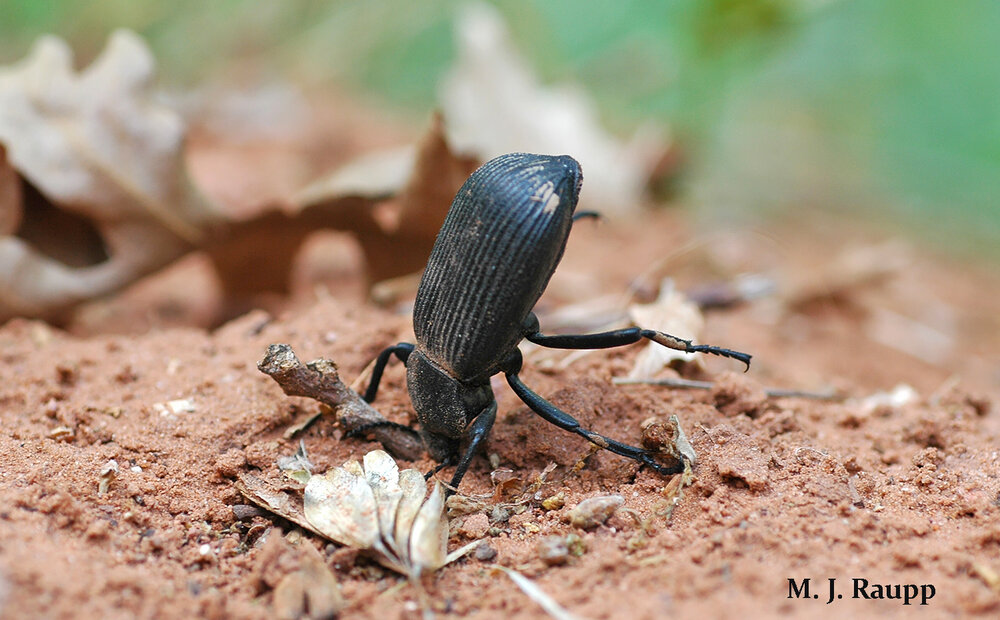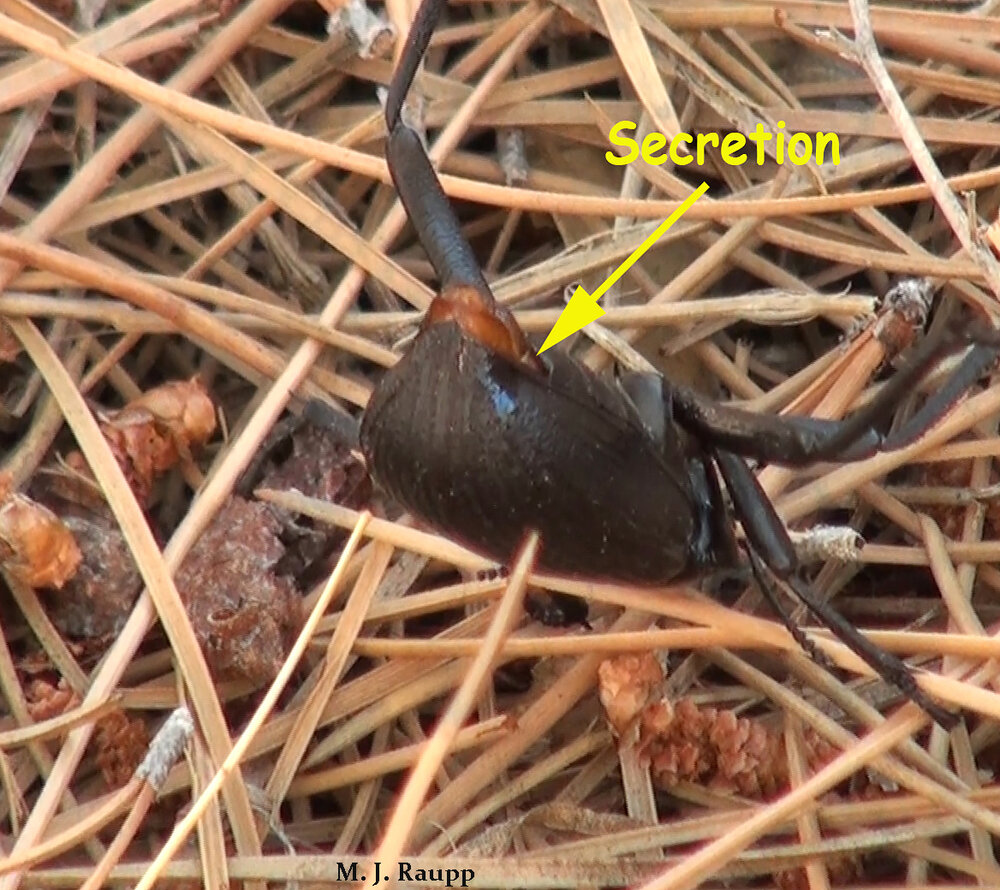
Eleodes stands on its head as a warning to predators. Warning ignored? Get ready for a stinky stinging dose of noxious chemical from the beetle’s rear end.
By some unusual circumstance, Bug of the Week escapes the chilly confines of the Maryland winter and visits scenic Zion National Park and the Great Basin Desert, where we encounter entertaining and unorthodox darkling beetles called desert stink beetles. You’ll remember last week we met cousins of these gymnastic beetles called forked fungus beetles as they battled for possession of bracket fungi and potential mates.

Check out the stinky discharge that issued from the beetle’s rear end when disturbed by a bug geek.
On the desert floor as day waned, these large and very juicy scrumptious looking darkling beetles appeared and wandered about feeding on vegetation with impunity. At close to an inch in length, these jet-black behemoths were highly conspicuous against the light red desert earth. With hungry predators such as lizards, birds, and rodents roaming about, the desert is a dangerous place for large, tasty-looking insects. As I crouched to photograph a beetle, it halted, stood on its head and lifted both pair of hind legs off the ground like some contortionist from Cirque du Soleil. What manner of trick was this? As I examined the creature a bit more closely with my fingers, my reward was a distinctly unpleasant odor emanating from the rear end of the bold beetle. Later my fingers turned a curious shade of brown where chemicals squirted by the beetle reacted with the air and my skin.
Defenses of the desert stink beetle: First, when you see a human with a camera, run for grassy cover. Second, if he has you cornered and pokes at you with his giant finger, stand on your head and kick at him. Third, if all else fails, just lie on your back, legs in the air, play dead, and maybe the idiot will get bored and leave you alone. That worked.

This picture has little to with the story other than to remind us of the beauty of the desert and our national parks.
This marvelous denizen of the desert was a darkling beetle in the genus Eleodes. Eleodes has evolved an elegant defense against other animals that would like to make it dinner. Dr. Thomas Eisner discovered that within the abdomen of Eleodes two large glands produce several types of quinones and other organic compounds. These noxious chemicals cause extreme irritation to mucus membranes such as those lining the mouth and eyes of predators like birds and toads. Quinones are also repellent to hard-core invertebrate predators like ants. Eisner suggested that the “headstand” routine may serve as a warning to would-be attackers to leave Eleodes alone or suffer the irritating consequences. It appears that at least one crafty desert predator, the grasshopper mouse, has devised a way to circumvent the beetle’s defense. Upon encountering its prey, the grasshopper mouse flips the beetle around and jams the beetle’s rear end into the soil. With the beetle’s chemical defenses shooting harmlessly into the dirt, the grasshopper mouse consumes the beetle, starting with the head, of course. When it comes to dining on Eleodes beetles, the grasshopper mouse has learned that one bad turn deserves another.
Acknowledgements
We thank Mike, Brian, Anne, and Jim for the inspiration for this Bug of the Week, and Dr. Shrewsbury for wrangling stinky beetles. The wonderful book “For Love of Insects” by Thomas Eisner served as a reference for this episode.
No comments:
Post a Comment